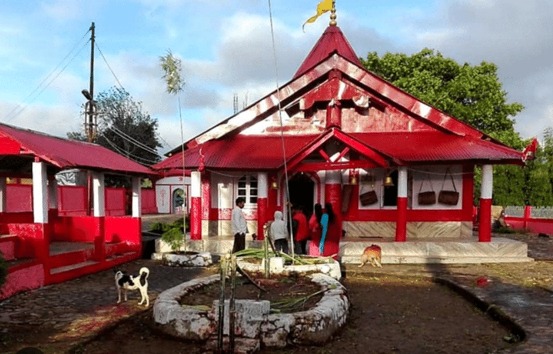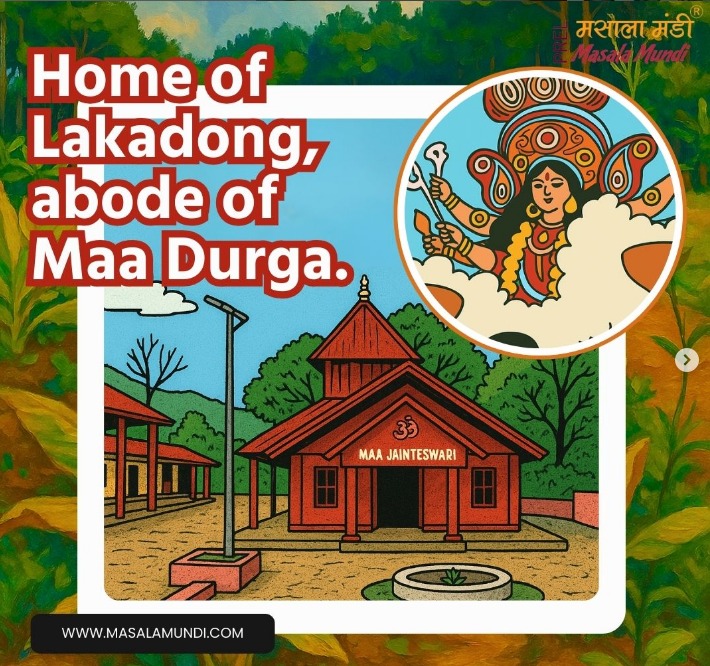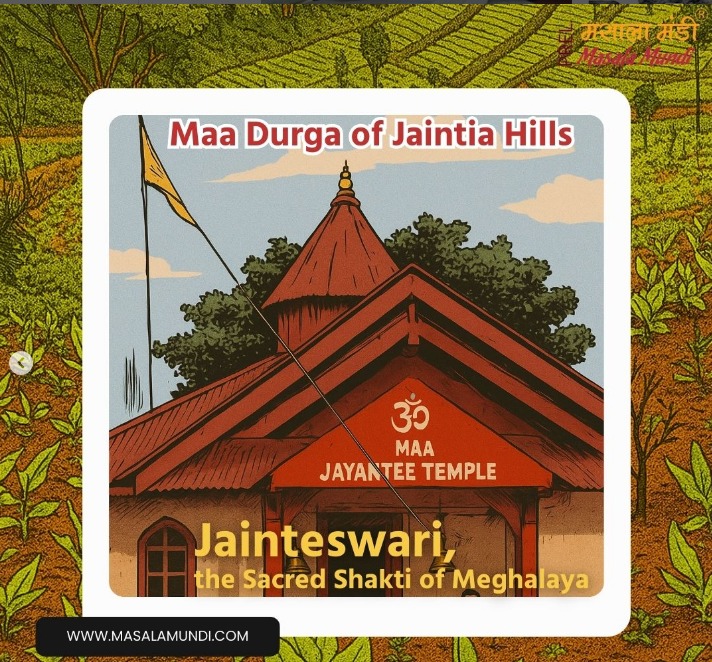No products in the cart.
Maa Durga in the Jaintia Hills: The Sacred Story of Nartiang

Nestled in the misty landscapes of Meghalaya, the Nartiang Durga Temple in the Jaintia Hills is a place where mythology, history, and tribal culture converge. Known as one of the 51 Shakti Peethas, this temple is not just a spiritual landmark—it is a living heritage of how divine energy blends seamlessly with local traditions.
The Shakti Peetha Legend
According to Hindu mythology, when Goddess Sati immolated herself during her father Daksha’s yagna, Lord Shiva, grief-stricken, carried her body across the universe. Lord Vishnu then used his Sudarshan Chakra to dismember her body, and each place where her body parts fell became a Shakti Peetha.
The Nartiang temple is believed to be the spot where Sati’s left thigh fell. This made the place sacred, infused with divine feminine energy. Here, the goddess is revered as Jainteswari, meaning “The Goddess of the Jaintias”.

The Jaintia Kings and Their Devotion
The Jaintia Kingdom, which once ruled these hills, considered Maa Durga their protector and source of prosperity. The rulers believed that their victories and wealth came from Shakti herself.
The kings not only patronized the temple but also ensured its rituals reflected both Hindu scriptures and local tribal traditions, creating a sacred fusion that still continues.
A Fusion of Rituals
Unlike many Shakti temples where animal sacrifices are common, Nartiang evolved with offerings that reflected the abundance of the hills:
- Forest produce like fruits and herbs
- Flowers and turmeric (a sacred local element)
- Nature-inspired rituals with Khasi–Jaintia music and instruments
Here, Hindu priests conduct the puja, but the cultural atmosphere is distinctly Khasi–Jaintia. This fusion shows how Maa Durga’s worship adapted beautifully to the land and its people.
Durga Puja in the Jaintia Hills
Image Suggestion: Devotees offering flowers and local produce during Durga Puja in Nartiang.
Durga Puja has been celebrated in Nartiang since the rule of the Jaintia kings. While it follows the broader Hindu tradition of invoking Maa Durga, the local tribal essence remains strong.
- The drums and chants echo tribal rhythms.
- The offerings come from the forests and farms of the hills.
- The community gatherings blend devotion with folk heritage.
This makes Durga Puja in Nartiang not just a festival, but a cultural bridge between myth and local identity.

Maa Durga: Protector of the Hills
Even today, devotees believe Maa Durga at Nartiang watches over the Jaintia Hills. She is worshipped not only as the slayer of evil forces but also as the guardian of forests, rivers, and people.
Her presence is a reminder that spirituality is not static—it evolves, absorbing the essence of the land and its culture.
✨ Conclusion
The story of Maa Durga in the Jaintia Hills is not only a tale of faith but also of cultural harmony. At Nartiang, she is both the cosmic mother and the guardian of the land, uniting the spiritual energy of Shakti with the natural soul of Meghalaya.
Visiting the temple is more than a pilgrimage—it is an experience of how devotion and culture can flow together like rivers meeting in the hills.



